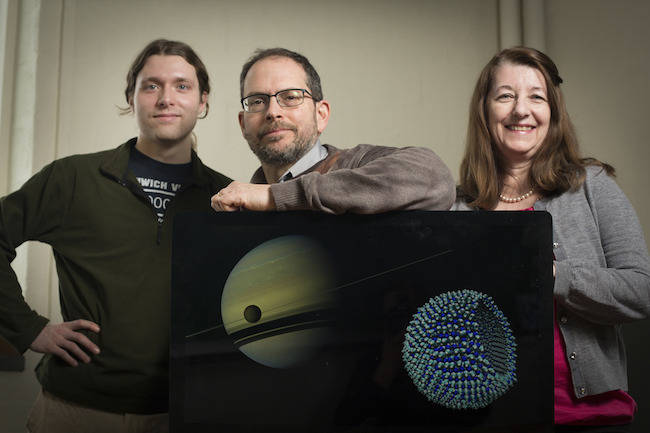'The first concrete blueprint of life not as we know it'
Scientists believe they have come up with a solid model for a new type of methane-based, oxygen-free life form that could thrive in the harsh, icy conditions of Saturn's mysterious freezing moon, Titan. The researchers over at Cornell University reckon they have come up with "the first concrete blueprint of life not as we know it."
Stevenson worked with chemical molecular dynamics boffin, Paulette Clancy, and Cornell's director for radiophysics and space research, Jonathan Lunine, on the project.
As The Register previously reported, Saturn's giant moon Titan is the only other planetary body in the Solar System that has naturally occurring surface liquids – it contains vast seas of methane.
The university's researchers theorised that such a celestial body "could harbour methane-based, oxygen-free cells."
The boffins came up with a cell membrane composed of small organic compounds and capable of functioning in liquid methane temperatures of 292 degrees below zero.
"We're not biologists, and we're not astronomers, but we had the right tools," Clancy said. "Perhaps it helped, because we didn't come in with any preconceptions about what should be in a membrane and what shouldn't."
Many alien-hunting scientists look for clues of extraterrestrial life in the so-called circumstellar habitable zone, which is the narrow band around the sun where it is believed water can exist.
"We just worked with the compounds that we knew were there and asked, 'If this was your palette, what can you make out of that?' – ClancyThe Cornell bods, who named their membrane an "azotosome", considered what would happen if the cells were based on methane instead of water.
 Stevenson, Lunine and Clancy with a Cassini image of Titan in the foreground of Saturn,
Stevenson, Lunine and Clancy with a Cassini image of Titan in the foreground of Saturn,
and an azotosome, the theorised cell membrane on Titan. Image credit: Cornell University
The azotosome is made from nitrogen, carbon and hydrogen molecules known to exist in the cryogenic seas of Titan, but shows the same stability and flexibility that Earth's analogous liposome does.Clancy and Stevenson were surprised by that outcome because they had never previously considered the mechanics of cell stability prior to their study.
Cornell added:
The engineers employed a molecular dynamics method that screened for candidate compounds from methane for self-assembly into membrane-like structures.The researchers' paper was published in the Science Advances journal on Friday. More "life not as we know it" details this way. ®
The most promising compound they found is an acrylonitrile azotosome, which showed good stability, a strong barrier to decomposition, and a flexibility similar to that of phospholipid membranes on Earth.
Acrylonitrile – a colourless, poisonous, liquid organic compound used in the manufacture of acrylic fibres, resins and thermoplastics – is present in Titan's atmosphere.
Source
No comments:
Post a Comment
Note: Only a member of this blog may post a comment.